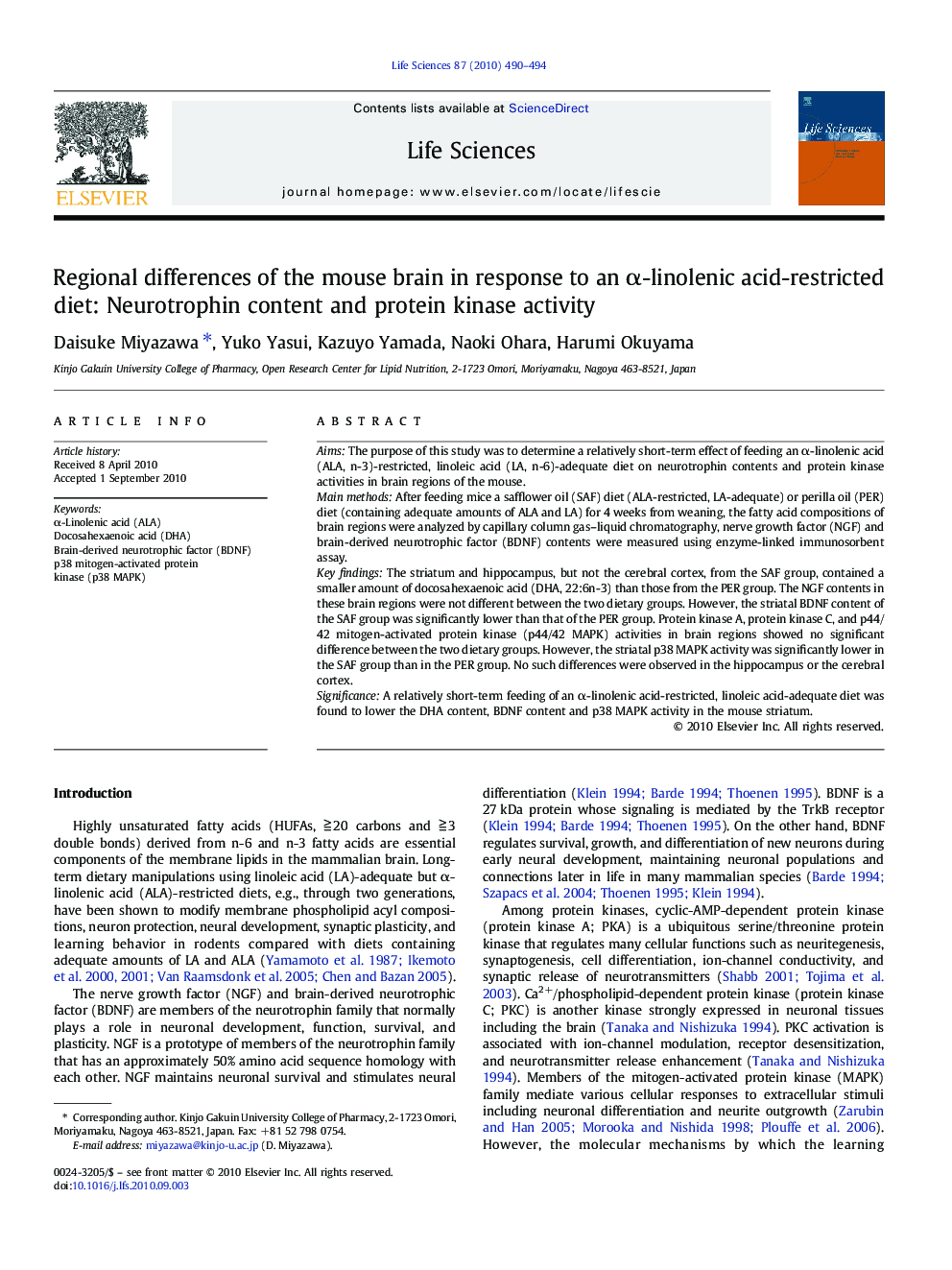| Article ID | Journal | Published Year | Pages | File Type |
|---|---|---|---|---|
| 2552663 | Life Sciences | 2010 | 5 Pages |
AimsThe purpose of this study was to determine a relatively short-term effect of feeding an α-linolenic acid (ALA, n-3)-restricted, linoleic acid (LA, n-6)-adequate diet on neurotrophin contents and protein kinase activities in brain regions of the mouse.Main methodsAfter feeding mice a safflower oil (SAF) diet (ALA-restricted, LA-adequate) or perilla oil (PER) diet (containing adequate amounts of ALA and LA) for 4 weeks from weaning, the fatty acid compositions of brain regions were analyzed by capillary column gas–liquid chromatography, nerve growth factor (NGF) and brain-derived neurotrophic factor (BDNF) contents were measured using enzyme-linked immunosorbent assay.Key findingsThe striatum and hippocampus, but not the cerebral cortex, from the SAF group, contained a smaller amount of docosahexaenoic acid (DHA, 22:6n-3) than those from the PER group. The NGF contents in these brain regions were not different between the two dietary groups. However, the striatal BDNF content of the SAF group was significantly lower than that of the PER group. Protein kinase A, protein kinase C, and p44/42 mitogen-activated protein kinase (p44/42 MAPK) activities in brain regions showed no significant difference between the two dietary groups. However, the striatal p38 MAPK activity was significantly lower in the SAF group than in the PER group. No such differences were observed in the hippocampus or the cerebral cortex.SignificanceA relatively short-term feeding of an α-linolenic acid-restricted, linoleic acid-adequate diet was found to lower the DHA content, BDNF content and p38 MAPK activity in the mouse striatum.
